I recently spent almost 2 weeks in Slovenia and I had a very good time – since when have you heard of me coming back from a vacation complaining? But it is true that I really had a good vacation this time again.
I started in Ljubljana, the capital of Slovenia. It is a small town, only about 250000 inhabitants which had maintained its medieval character, at least in the center of town. The Ljubljana River crosses the center of town which is dominated by the Ljubljana Castle, the tower of which is visible above the light green tree.
Both sides of the river have been preserved and are now pedestrian area where locals and tourists mingle in many restaurants and bars. Because Slovenia has been at the crossroads between Mediterranean, Slavic, Eastern and Northern cultures, it offers a mixture of many different backgrounds, but strongest is the Austro-Hungarian influence which existed until WWI. It can be seen in many of the buildings in the older part of town, which is well preserved, but in places in need of minor renovations – I have seen many facades that were peeling (more than the paint) and other flaws here and there. Slovenia is a young country and so I would expect that they will catch up very quickly.
A river, or water in general, always adds a side of serenity to the center of a city, which otherwise can be very hectic. This is the case in Ljubljana as well, especially with the first colours of fall that are starting to show in the trees. A few days after I left Ljubljana, there were very severe rains in Slovenia and in places, the Ljubljana River left its banks – fortunately not in the center of Ljubljana and therefore this area was not flooded.
There is another pedestrian street parallel to the river. This one too has restaurants, but it has more shops and older houses. It is also here that Ljubljana City Hall can be found.
Joze Plecnik (1872-1957 and I apologise to Ingrid and all other Slovenians for the lack of accents on his name – but I just cannot figure out how to add these in WordPress) was a very important architect who designed several buildings mainly in Ljubljana. He is an interesting character in that he also designed interiors, decorative motiefs and furniture, just like Frank Loyd Wright and Viktor Horta, two other architects that I really like. Amongst others, Plecnikdesigned the National and University Library, an imposing building with red and gray bricks. This figure sits above one of the entrances and is, to me, the exact opposite of the reserved attitude I would expect of people that go into a library. It looks more like a professor that is fully absorbed by the topic of his lecture!
Just as you get used to the Germanic influence of the Austro-Hungarian Empire, you get a reminder that it is difficult to “classify” Slovenia as only one thing. In the very back of the somewhat Teutonic Library, is the very Venitian headquarters of the Ljubljana Festival Committee. Venice’s influence in Slovenia was not limited to the coast as we will see later.
As in every city these days, there are unfortunately graffiti’s also here. However, I was taken by the artistic efforts that some of them went through – it may be the reason why they have not been painted over or cleaned even though they are right in the middle of the city. I call this one “The Yawn”, but it certainly did not reflect my feelings as I was walking around town.
Slovenia is said to have more churches per inhabitant than any other country in Europe – and I believe it. There were at least five of them within a five minute walk of the hotel and they all had masses to celebrate early on Sunday, I am sure – fortunately, I only arrived there at noon and the bell ringing was already over! Another influence to note – Tirol – where buildings straddling a road seem to be very common.
Just South of the center, the Ljubljana River continues through a residential neighborhood. In the early Sunday evening, there were lovers walking hand in hand (I did not take pictures of them, respecting their privacy!) and fishermen (no need for privacy there!) A very pleasant walk after dinner.
Further along is the Church of Saint John the Baptiste, which is where Plecnik and another great Slovenian, the poet France Preseren used to worship. In order to improve the beauty of the church, Plecnik redesigned the bridge in front of the church adding one of its signature peices to it; if you see a pyramid in and around Ljubljana, there are good chances that Plecnik has something to do with it. In this cases, there are four, one at each corner of the bridge.
Even in the more touristy area right at the center, I had the impression that there were a lot more locals than tourists in the early evening and the atmosphere was very pleasant. This is the cobbler Bridge, one of the older bridges in this area where there were shoe repair shops in the past when this was one of the main entrances into the fortified city and activities outside the city were not taxed. Strange how throughout man’s existence, it seems that dodging taxes (legally of course) seems to occupy a lot of our time.
On Monday I went to Postoyna – more about that later.
On Tuesday, I continued my explorations of Ljubljana. Here is the Parliament Building, with a very imposing front entrance – the rest of the building is rather ordinary… and typical of 50’s architecture. In the words of the ‘good book’, it “is no beauty-pageant winner” on the outside!
I went to Tivoli Garden – a more common name than I thought. This is the third time that I get to visit Tivoli Gardens! This was initially the private property of a wealthy family who lived in this house. The tree in front of the house is strategiacally located (on the photo) to hide a very bright yellow banner hanging over the front door. The rest of the house, and the fountains in front of it are very nice. On this Tuesday morning, I ran into a lot of school groups obviously on a “day out”.
It was still hazy in the early morning and the Ljubljana Castle was barely visible as a silhouette in the distance.
In the main alley towards Tivoli Mansion, there was an exhibit of entries that won the 2010 Ecological Architecture Prize. If you look carefully, you can also see the less than attractive yellow banner on the house. I was more interested by what was on display – buildings from all over the world which had been recognised either because their design made their use eco-friendly or buildings whose construction had a significantly lower carbon footprint because of intelligent design (such as a much lower weight of structure for the roof of a new train station in Leuven, Belgium)
Back in town, I walked around one of the larger churches in the Old City: the Cathedral of Saint Nicholas. It is a very nice building dating from late 18th century (even though a church has been in this location since the 13th century). The two bronze doors were added in 1996, with a much more modern style, commemorating the visit of Pope John Paul II. This is the side door which celebrates past bishops of the Ljubljana diocese.
On Tuesday afternoon, I joined the group with which I will travel the rest of the time in Slovenia. Ingrid, our guide, took us to Ljubljana Castle. We first visited the chapel- a vision of pink and coats of arms!
The view from the top of the hill is great. In the middle, you can see the central square of Ljubljana, named after the famous poet Preseren, with three bridges across the Ljubljana River, designed by Plecnik – yes, he is back again… On the upper left of the photo is the start of Tivoli Gardens, where I was earlier this day. Right above the trees in the lower center of the photo, you can see the top of the spire on City Hall.
The new symbol of Ljubljana is the dragon with the wagging tail. The Dragon Bridge, just North of the center of the old town, was built in the late 19th century to celebrate the 50th anniversary of the reign of Franz Josef of Austria. Folklore says that the dragons are supposed to wag their tales when a virgin walks across the bridge – I was not lucky enough to see that happen, so I cannot comment on the validity of this myth!
Along the Ljulbjana River near the Dragon Bridge are market stalls designed by Plecnik – no pyramids here, but his other signature piece: columns, and a lot of those… In this photo, 3/5 of our group: Bob, Debbie and Ingrid (Giuseppe, the final member could only join us the following day as he was still travelling from Bologna).
In the middle of Preseren Square is a statue to the poet hero – France Preseren himself
On Cobbler’s Bridge, you can get freshly cooked corn on the cob – the dog seems more interested than the lady – maybe the corn is for him!
On my last day in Slovenia, after the tour, I was back in Ljubljana. I had really enjoyed walking in Krakovo and Trnovo in the evening, so I decided to go back in daylight to see what it was like. This is the artistic and beatnik neighborhood of the capital and is a lot more laid back that the center area. A small canal offers an opportunity for walking ones dog.
In front, a highly decorated pub. Note that the sign says SAX so get your mind out of the gutter…
In front of the Church of St John the Baptist, there is a monument to four Slovenian impressionist painters: Matija Jama, Ivan Grohar, Rihard Jakopic and Matej Sternen. I must admit that I have never heard of any of them, and since they would not let me into the National Gallery (because of my back pack) I cannot say how talented they were. I hate it when they tell me I have to leave my backpack in a locker, and than I go into the museum and there are ladies with purses twice as big and heavies as my camera bag! Why could they go in?
A little further are the remains of the ancient wall built by the Romans when they occupied this area. However, our friendly architect, none other than Plecnik, could not leave well enough alone and decided to add a pyramid to the wall, to make it fit in better with all the other pyramids that he sprinkled around town … the Plecnik pyramid is just visible behind and to the left the base of the yellowing tree in the background.
That’s it for Ljubljana. The Monday, before I joined the rest of the group, I decided to visit the caves at Postojna and the castle at Predjama. I was hoping to do that with an organised day tour from Ljubljana, but none were available. The Tourist Information office could not really help me to go there on my own – they said I could get to the caves, but that the castle was really far. The Hotel could not help me either – same answer about the castle being really far, maybe one hour walk.
So I checked the ‘good book’ – in it I found a web site which indicated that there was a free shuttle bus going from Postojna Station to the Postojna Caves, than to the Predjama Castle and back. Thank goodness for the ‘good book’ – once again! I took the train from Ljubljana station that was supposed to leave about 9:30, but it was 25 minutes late. Had it been on time, I only had 5 minutes to catch the bus in Postojna, so I figured that the bus was long gone when I got off the train – however, I found out that the bus waits for the train, so I got a ride to the castle (about 25 minutes) from a very friendly driver. The bus broke down just as we arrived at the castle – total electrical failure to the point that he could not open the passenger door. I had to climb over the driver seat to get out – no problems, just another interesting experience!
The Predjama Castle is unique because it is built at the mouth of a cave, almost inside the cave, with shear drops above and below. There are traces of buildings that date back to the 12th century but the current construction dates from the 16th century. The approach towards it is very dramatic.
Given its position, the view from one of the many balconies is not bad either, with bare rock on one side, the castle wall on the other, and endless valley in front….
The castle has a small chapel with a very interesting “Pietà”
The visit is very interesting. There is a jail and torture chamber, fully equipped; the armoury has many examples of weapons from the 16th and 17th centuries. While most displays are well done and what I would find appropriate, some are a little kitch like this one in the main reception room! The Duke and his private Valet having a private conversation…
Here is a better general view of the setting for the castle. Again, the trees are just changing colours, giving additional tints to the view. Unfortunately, a large cloud decided to hide the sun just as I was trying to take this photo!
I discovered that the bus could not be fixed, but fortunately friends of the driver had arrived so they gave me a ride back to the cave at the time that the bus was supposed to leave. I had lunch at the caves and then waited for … I really did not know what to expect. This is a very popular place, with bus after bus arriving and only tours every hour on the hour. At 14:00 I waited with about 100 other people and we were ushered into a little train (I had read that the entrance to the caves includes about 2km on a small train. As the train left, I got sudden visions of the chase in “Indiana Jones and the Temple of Doom” – had there been a lava lake below the train, it would have been perfect. I Had to be careful raising my hand to take a picture as it could have been snapped off instantly by low rocks. However, we could see already that the cave were full of very nice formations.
At the bottom, after a 5-6 minute ride, the train came to a stop and as I got out I saw four neon signs: “Deutch”, “Italiano”, “English”, and way in the distance “Sloven” (I do not remember exactly how it was spelled – sorry Ingrid!). I chose Italian as I figured there would be fewer people interested. I was wrong, it was a large group, but they were a lot of fun. Unfortunately, no photos allowed in the cave, so you all have to take my word for the fact that they are really worth it. I do not remember where I had seen more spectacular caves before except maybe the Carlsbad Caverns in New Mexico, but these were more ‘alive’ with water dripping all over the place. At the end of the tour, there is the Concert Hall, a huge cavern in which they regularly hold concerts with several 1000 people attending. The visit takes about 1.5 hours and I was just in time for the bus to take me back to the station. My friend was back at the wheel, but of a different bus and he informed me that he has to pick someone up at the castle first. Since I Was sure to get my train any way, I could not complain – schedules here seem to be flexible and I benefited from it earlier in the day, so I should let others benefit too.
While waiting for the train to Ljubljana, I discovered this old steam engine at the Postojna station. I wonder when it was last used?
Ljubljana, Postojna and Pretdama – A great way to start and end my trip in Slovenia. We are off to Levika Planina and Logarska Dolina next. Spectacular mountains and valleys coming up!
(5600 Page Views)

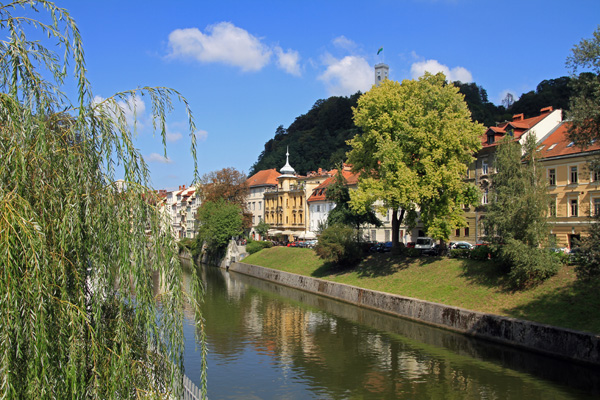

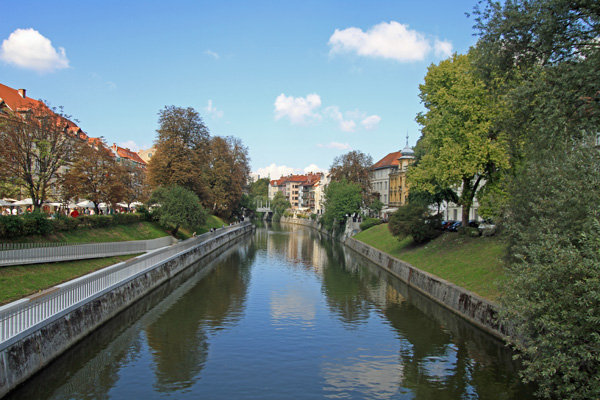
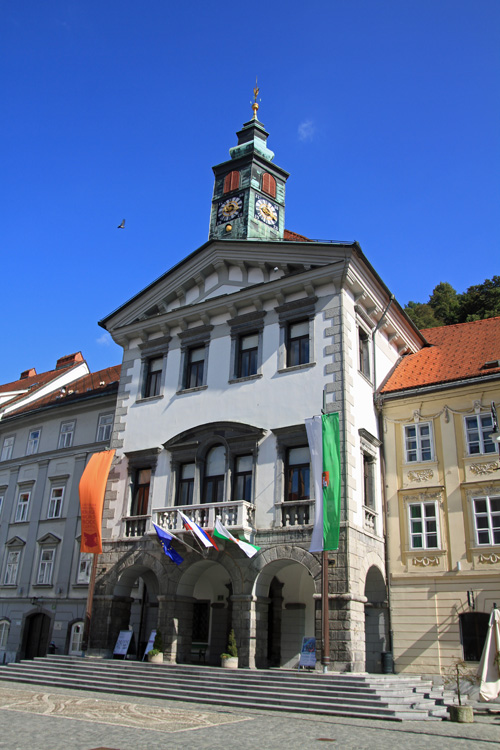


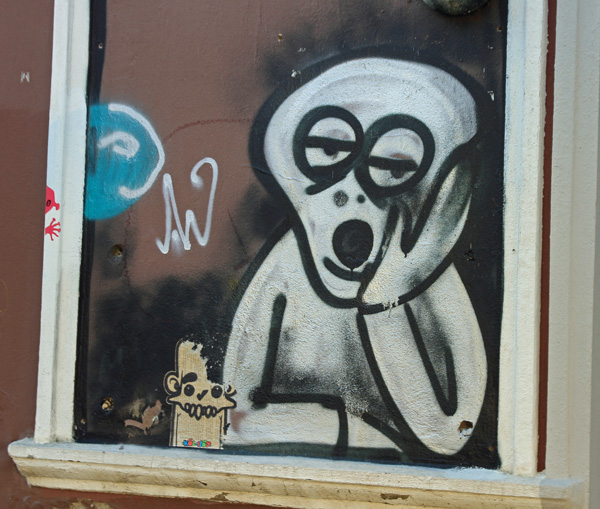


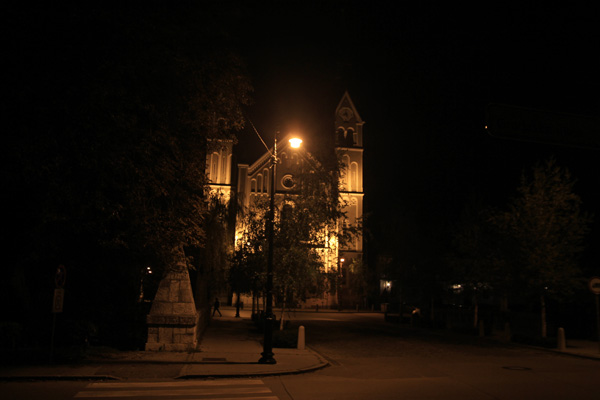


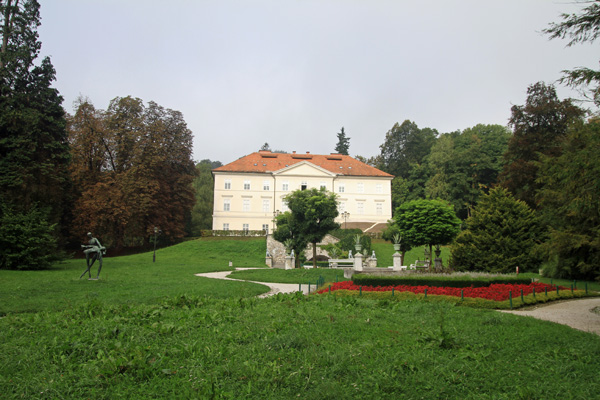



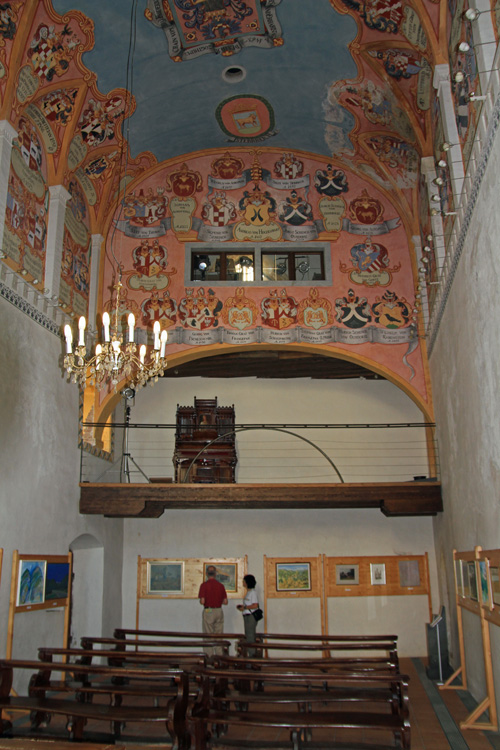






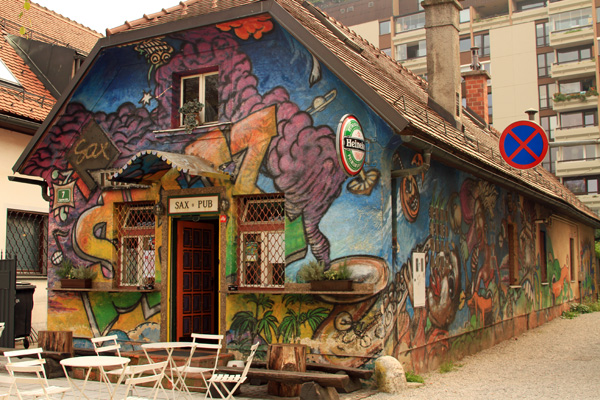
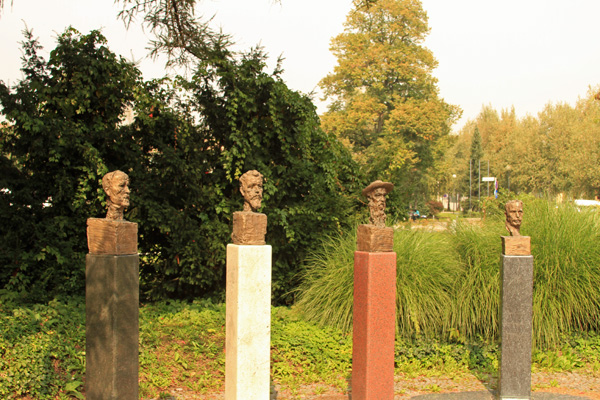
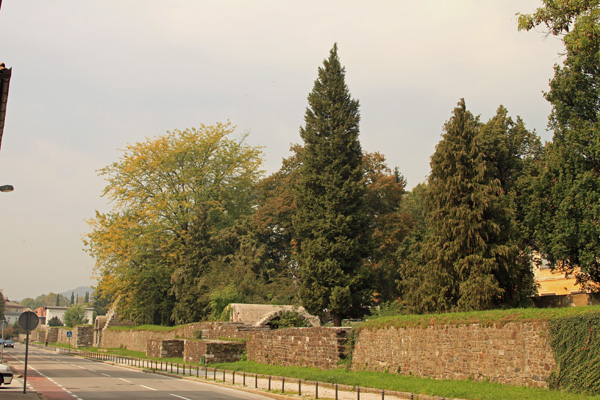
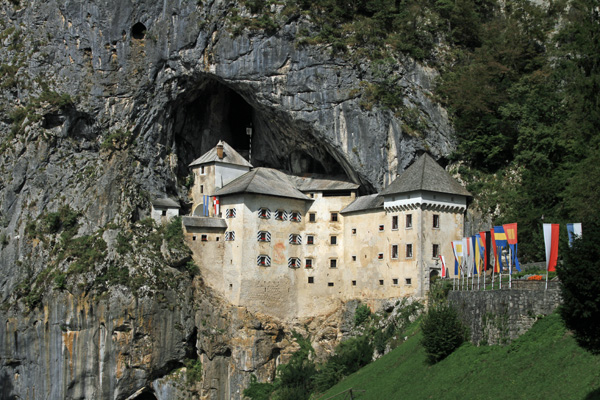
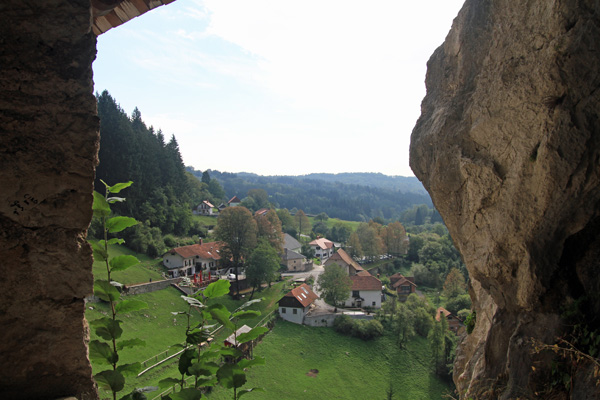
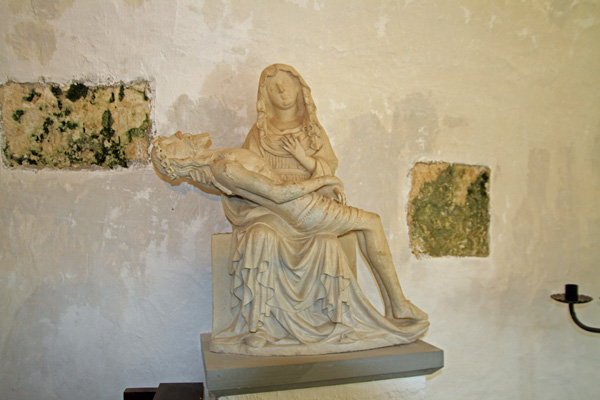
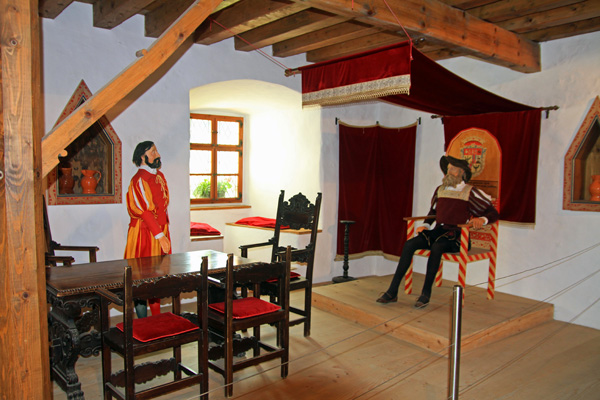

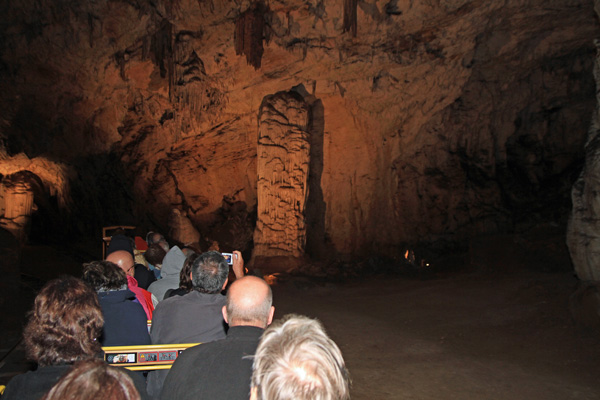
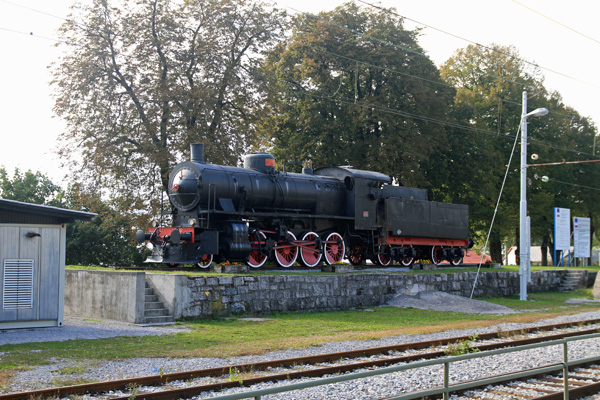
Pierre, you either have great luck, or pick times to go on vacation when the weather is best. I know a professor in Slovenia whom I perhaps should visit sometime.